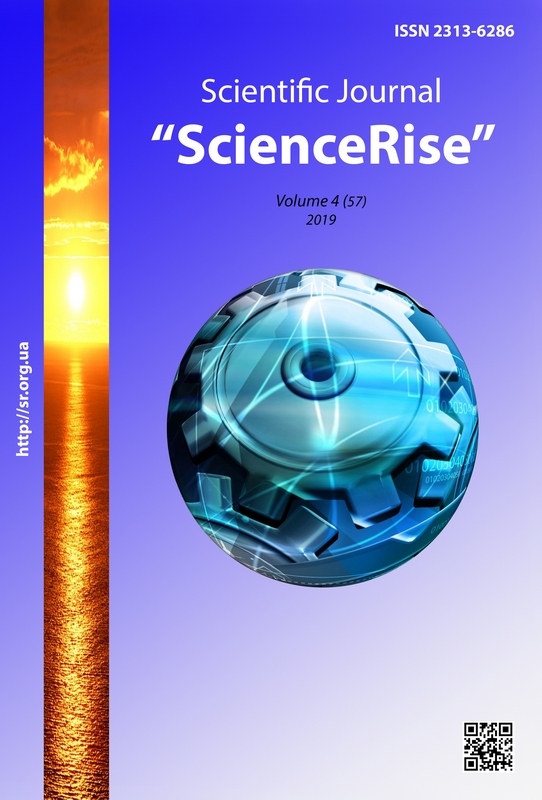Possibilities of enhancement of the strength and durability of epoxy composites by silicon carbide and titanium nitride filling
DOI:
https://doi.org/10.15587/2313-8416.2019.164289Keywords:
epoxy composite, strength, microhardness, heat resistance, diagrams, swelling in acetone, nitric acid, shrinkageAbstract
Composites based on ED20+PEPA resin with filling of SiC, TiN microparticles and their mixtures with cement are studied. The possibilities for a significant increase in microhardness – 1.5-2 times, modulus at bending (1.4 - 1.7 times), compressive strength (for SiC), abrasion resistance and chemical resistance (in nitric acid and acetone/ethyl acetate) are revealed. At the same time, the fire resistance of the compositions and their strength properties significantly increases
References
Starokadomskiy, D. (2018). Dlinnyy vek epoksidki. Nauka i Zhizn, 1, 66–71.
Lypatov, Yu. S. (1991). Physico-chemistry of a filled polymers. Kyiv: Naukova Dumka, 220.
Starokadomsky, D. L. (2008). Some features of the swelling of photopolymer composites with various indicators of high-silica silica. Plastic Masses, 2, 33–36.
Emelina, O. Yu. (2014). Composite polymeric materials, modified by dispersion fillers, applicable in the construction and repair of equipment. Bulletin of Kazan Technological University, 17 (3), 128–130.
Voronkov, A. G., Yartsev, V. P. (2006). Epoxy polymer solutions for the repair and protection of building products and structures. Tambov: Publishing House of Tambov State Techn. University, 92.
Poornima, V., Thomas, S., Huczko, A. (2010). EpoxyresinSiC nanocomposites. Synthesis & characterization. Kompozyty, 10, 11–14.
Vijayan, P. P., Pionteck, J., Huczko, A., Puglia, D., Kenny, J. M., Thomas, S. (2014). Liquid rubber and silicon carbide nanofiber modified epoxy nanocomposites: Volume shrinkage, cure kinetics and properties. Composites Science and Technology, 102, 65–73. doi: http://doi.org/10.1016/j.compscitech.2014.07.017
Ishchenko, A., Radionenko, A., Ischenko, E. (2017). Tribotechnical research into friction surfaces based on polymeric composite materials. Eastern-European Journal of Enterprise Technologies, 6 (12 (90)), 12–19. doi: http://doi.org/10.15587/1729-4061.2017.114367
Reshetnyk, M., Starokadomsky, D., Ishenko, A. (2017). Filling with the Graphene Nanoplates as a Way to Improve Properties of Epoxy-Composites for Industrial and Geophysical Machinery. American Journal of Physics and Applications, 5 (6), 120–125. doi: http://doi.org/10.11648/j.ajpa.20170506.19
Kablov, V. F., Lifanov, V. S., Logvinova, M. Ya., Kochetkov, V. G. (2013). Fire and heat resistant epoxy composites filled with silicon carbide. Modern problems of science and education, 6, 10–17.
Starokadomsky, D. (2018). Physico-mechanical properties and micro-nanostructure of epoxy composites filled with gypsum, chalk and cement. Composites and Nanostructures, 10 (1 (37)), 45–57.
Zolotareva, V. V., Grigorenko, T. I., Kochergin, Yu. S., Samoylova, E. E. (2013). The effect of fine fillers (BN, SiO2, Cr2O3, Omiacarb, iron powder) on the wear of epoxy and epoxy-rubber polymers. Modern building materials, 1 (99), 108–114.
Downloads
Published
Issue
Section
License
Copyright (c) 2019 Dmitriy Starokadomsky, Sergij Golovan, Nadia Sigareva, Оlexander Тkachenko, Nadia Moshkovska, Lyudmyla Kоkhtych, Іvan Garashchenko

This work is licensed under a Creative Commons Attribution 4.0 International License.
Our journal abides by the Creative Commons CC BY copyright rights and permissions for open access journals.
Authors, who are published in this journal, agree to the following conditions:
1. The authors reserve the right to authorship of the work and pass the first publication right of this work to the journal under the terms of a Creative Commons CC BY, which allows others to freely distribute the published research with the obligatory reference to the authors of the original work and the first publication of the work in this journal.
2. The authors have the right to conclude separate supplement agreements that relate to non-exclusive work distribution in the form in which it has been published by the journal (for example, to upload the work to the online storage of the journal or publish it as part of a monograph), provided that the reference to the first publication of the work in this journal is included.

